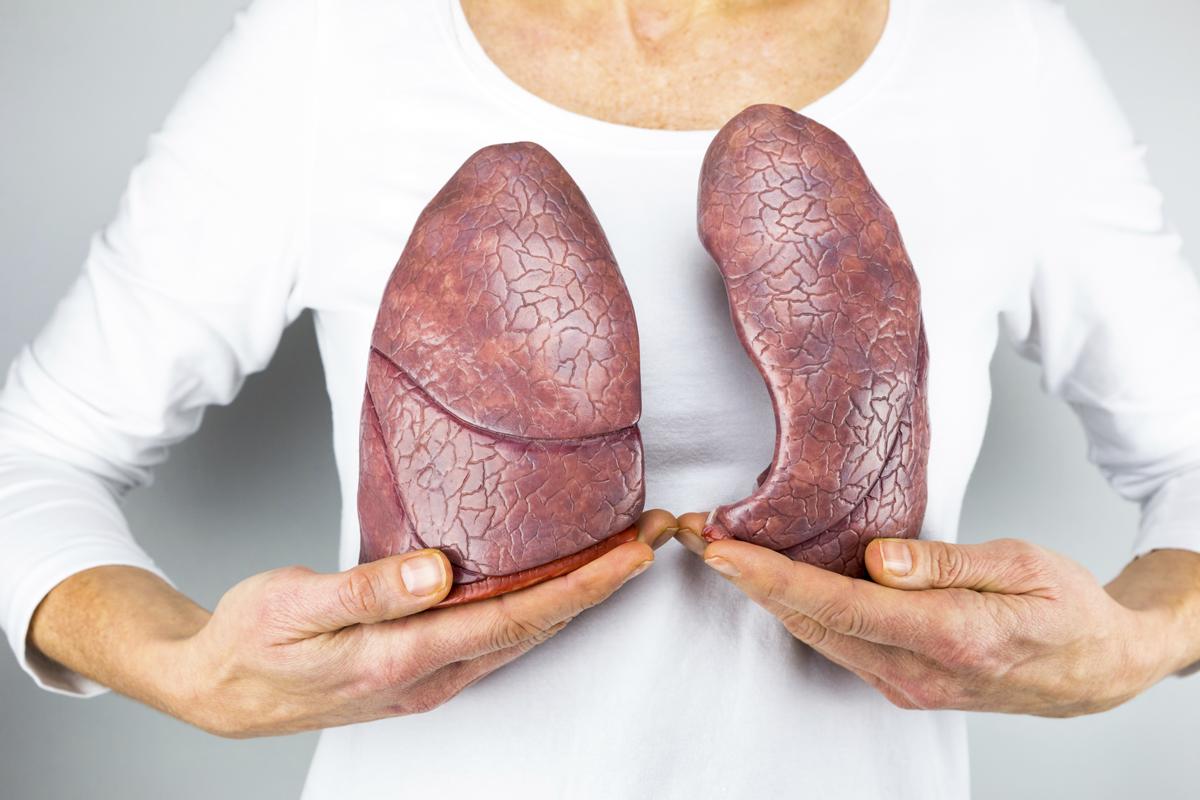
Lung cancer has emerged as one of the most deadliest and dreadful killer in past few decades among both, men and women. Every year, around 2.7 to 3 million people lose their lives to this malignant disease.
Lung cancer is the uncontrolled growth of abnormal cells in one or both the lungs. These cells do not carry out the functions of the normal lung cells, and do not develop into healthy tissue. As they continue to grow, they form tumors, and interfere with the functioning of the lung. Research has discovered that it takes a series of mutations to create a lung cancer cell. Initially, a cell may be benign, i.e., it may still function normally in spite of having mutations. But, when it gets divided, it passes its abnormalities to two cells. These get further divided into four, and consequently, there are a huge number of abnormal cells, which form malignant tumors, giving rise to cancer.
Types
This disease is divides into two common types:
- Small Cell – It is not the one found in most cases, it takes the second position. Here, the infection starts at a very small level inside the breathing tube (large breathing tube of our respiratory system) in the form of infection and growth of small round cells, it mutates and grows very fast at rapid pace, which leads to problems in breathing process. It is believed to be mainly caused due to smoking.
- Non-small Cell – It is very common, and found in most of the cases. It affects other parts of the lung, and the time taken by it to develop completely differs from the other type. Its main subtypes are Squamous Cell Carcinoma (found in a bronchus near the center of lung), Adenocarcenoma (caused due to mucus-producing cells), and Large Cell Carcinoma.
Causes
- Cigarette-smoking stands at the number one position among the causes. It is estimated to have taken about 80-85% of the lives of those who suffer from this disease.
- Exposure to substances, such as asbestos, which come from the industrial area is the other major reason.
- Besides this, passive smoking, abuse of chemical elements, genetic disorders, etc., are also considered as possible causes.
Symptoms
- Wheezing and coughing are the primary symptoms, which are sometimes is accompanied by a small quantity of blood.
- At times, due to the blood secretion through the internal part (affected tissues/cells) of the lung, the affected person’s mucus can contain blood stains.
- It is also accompanied by weight loss, cyanosis (change in color of skin due to the less supply of oxygen), and back-ache.
- The patient may feel extremely tired, have pain in the chest, as well swelling of arms and legs.
- As the time passes by, the patient finds it difficult to breathe (shortness of breath, which is also called Dyspnea).
Diagnosis
The carcinogens, which are found in tobacco and substances like asbestos, damage the cells on the internal lining of bronchi and other sensitive areas of the respiratory systems, such as air passages. The tissues that are infected are damaged, and they slowly start taking shape of tumors. In some cases, these carcinogen substances do not show their effect altogether for few years to a couple of decades on the tissues/cells, after initial exposure, which makes it hard to detect and substantially reduces the possibility of survival of the patient.
If you think that you might have contracted the disease, then the first advice for you would be to find a good physician, and get yourself diagnosed for it. There are many diagnostic tests available, which can help you find out if you are really infected. The tests include a CT scan, CAT scan, Chest X-Ray, and Sputum Culture Testing.
Stages
The cancer is staged in five stages depending upon its progression and the probability of the patient’s survival.
- Stage 0 indicates that the cancer has just infected, but has not yet started spreading and can be controlled. The Stage 0 length can be up to 5 years, and the patient’s survival rates are about 75-85%.
- Stage I indicates that the tumor is inside the lung, but has not yet matured and started spreading. The survival rate for the same is about 50%.
- Stage II indicates that the disease has started spreading, survival rates for patient are very low, about 25-30%.
- Stage III indicates that the tumor has matured and has spread across every region around the chest and all the blood vessels. Survival rates are only 10-15%.
- Stage IV indicates that the disease has rapidly spread everywhere in the body, and the survival rates are not more than 1-2%.
Treatment
The severity and treatment success rate highly depend on the direction in which the disease is spreading. If the tumor is growing inwards or if the tumor has a mutating capability, then it really becomes very hard to detect the condition in its early stage. The spreading of the damaged/infected tissues all over the body through blood (a condition, which is called metastasis) makes the condition worst for the patient, as it stands a very high possibility of multiple-cancer situation. The treatment depends on the stage of the disorder, and the physical and medical history of the patient. The options primarily include surgery, radiation, and chemotherapy.
Preventive Measures
- Try to avoid both, active and passive smoking.
- Try to avoid junk food, include as much vegetables as possible in your daily diet.
- Try to avoid the contact of industrial substances, such as asbestos, coal gas, etc.
- Take vitamins daily.
- Reduce alcohol consumption.
Disclaimer: This HealthHearty article is for informative purposes only, and should not be used as a replacement for expert medical advice.


